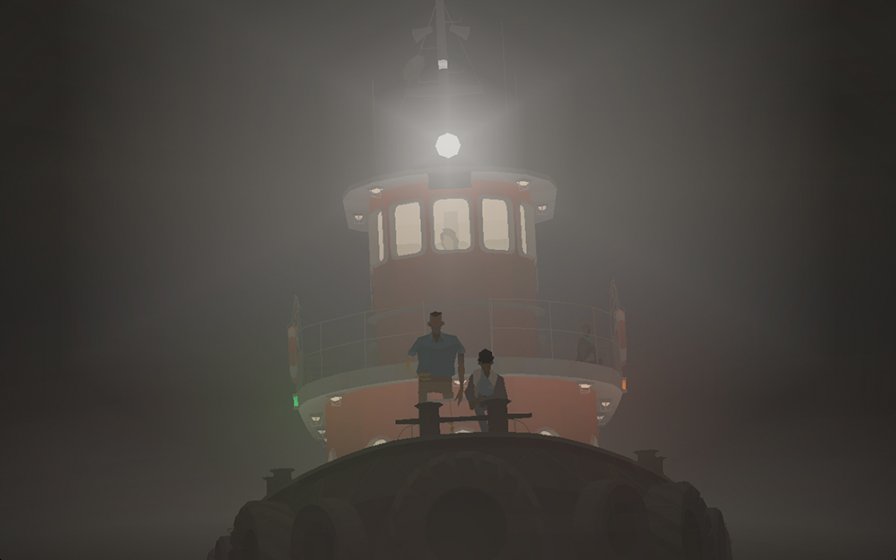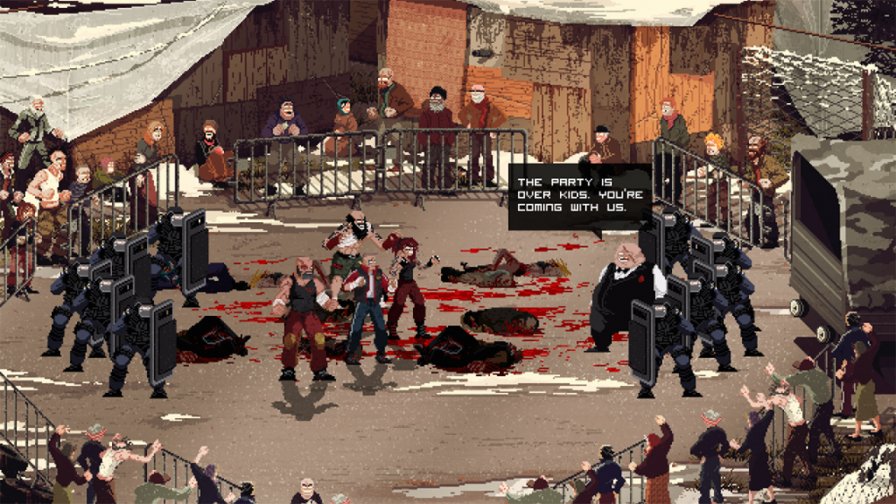Welcome to Screen Week! Join us as we explore the films, TV shows, and video games that kept us staring at screens. More from this series
Hyper Light Drifter
Developer: Heart Machine
[PlayStation 4, Xbox One, Windows, Linux, Macintosh OS, Ouya]

Why do we fight?
Futility always stands by your shoulder in any struggle. Whether it’s traversing vast lands to seek a cure to a indescribable sickness, or to fight your own limitations to accomplish a simple task, or to escape something that is destroying you, or to have any sense of conscience… there’s always someone or something there, pointing out the pointlessness of the effort, encouraging you to give up. Maybe it’s that nobody supports what you’re doing. Perhaps the people you care for most have turned against you. Or maybe it’s your own body that keeps hitting a steel wall.
The question becomes, Why bother?
We need not answer that. Futility comes from selfishness. And we struggle not for ourselves. Drifting through the plains and ruins with a sword and arsenal, fighting off hordes of forgotten times, while inside your body wastes away from illness and exertion. Maintaining principles and attacking sacred beliefs among your friends. Grinding against your body’s imperfect designs to function within normal parameters. Even being able to face up to yourself and admit that you are flawed and capable of doing wrong to others.
We fight because we must. No matter the cost. Even if it’s our lives.
Inside
Developer: Playdead
[PlayStation 4, Xbox One, Windows]

It was Playdead’s clever combination of a singular visual style, a classic puzzle design, and an ambitious but ambiguous narrative that made Limbo an instant hallmark for the modern independent gaming movement. And while Inside, the studio’s follow-up, emulated that winning formula perhaps a bit too faithfully, it did refine each element to a new pinnacle. The game asked the player to fill the role of a nameless (and faceless) child protagonist on his quest to escape (?) a sinister authoritarian nightmare (?) in which predatory forces seem to capture and indoctrinate (?) innocent people (?), but naturally, a couple narrative twists and an alternate ending made for murky analysis and, ultimately, ripped the game away from cliché. With artfully sterile, detached aesthetics and nods to the desolate dystopian ambience of Philip K. Dick and Cormac McCarthy and even Cronenbergian body horror, Playdead once again expanded the relatively limited narrative and mechanical language of the independent platformer genre with Inside, reaching toward established literary and cinematic traditions that, unlike so many others, haven’t yet been exploited to the point of oversaturation within the interactive media space.
Jikkyou Powerful Pro Yakyuu 2016
Developer: Konami
[PlayStation]

Successful sports simulations, bound by their subservience to realism, can rarely be commended for their artistic originality. As immersive as the uncanny valley-traversing visuals of NBA 2k and Madden prove to be, it isn’t hard to become fatigued staring down a scarily accurate reflection of the reality you’ve plopped in front of the console to escape. In terms of timelessness, many of the first sports series that come to mind are among the least grounded in reality that I’ve played: the Backyard Sports CD-ROMs of the early 00s; Mario’s ventures into Tennis, Golf and Soccer; and Jikkyou Powerful Pro Yakyuu, Japan’s long-running franchise starring Mii-esque caricatures of the Nippon Professional Baseball League’s entire roster. JPPY celebrated its 20th birthday in 2016 with the series’ deepest installment yet, featuring a smorgasbord of manga-inspired story modes, a frustratingly addictive arcade challenge that revisited fictional “boss” teams of years past, and inviting gameplay that was as easy to pick up as it was deep and intuitive.
Kentucky Route Zero: Act IV
Developer: Cardboard Computer
[Windows, OS X, Linux]

A couple things have been evident about Kentucky Route Zero from the beginning: its voice (a deadpan blend of Southern Gothic and Ionesco absurdity), and its distinctly expressionist visual style. KRZ has always been “different,” but over these last few years, it has matured into a fine examination of how memory shapes our lives — and often fails us. Set along a mysterious river, Act IV exploded the game’s text adventure design into a series of forking paths that reinvented its plot at every turn. It’s the most complex thing Cardboard Computer has made, held up by their most memorable and eerie passages to date: a mechanic who teaches French literature, the search for the song buried inside a robotic mammoth, a distillery run by electrified skeletons, and a gorgeous sequence staged as security camera footage that is possibly Zero’s masterstroke. Maybe it’s because we know our time with Shannon, Conway, Ezra, and their friends is coming to an end, but there was an unshakeable feeling of sadness within this Act, the regret of learning that all things pass away, that nothing is final, and that, whether or not we ever get back to the highway, the night can’t last forever.
Mother Russia Bleeds
Developer: Le Cartel Studio
[PlayStation 4, Windows, Linux, Macintosh OS]

The beat-em up genre thrived during a time when 25¢ bought you three lives and a dream in classics like Double Dragon, River City Ransom, and Final Fight. The style was defined by a left-to-right progression in pixelated 2D, dispatching a variety of punks, vagrants, and drug users with Reagan-era hero efficiency. The genre relied on crushing difficulty and overwhelming odds to sap quarters from arcade denizens, and it died when gaming moved to living rooms and updated to 3D. While elements of the genre carried over into modern titles, the core gameplay experience of the beat-em up game was dead by the end of the 90s. Mother Russia Bleeds, however, stepped into the shoes of that dead genre, driven home in the opening scene by literally bringing your characters back to life, with even a storyline echoing the leftover paranoia of the 1980s: a powerful new superdrug has taken over post-apocalyptic Russia, and it’s up to our heroes to punch, kick, and murder their way through countless enemies to get answers. What made this game stand out from the half-baked nostalgia dumps of years past was that it understood what made those games fun. The characters moved quickly, dealt devastating damage, and bled. The limited pixel count of the 16-bit era was replaced with graphic depictions of viscera and rot that would have been the talk of every playground, on the level of Mortal Kombat. The story was inconsequential and short, but with a 4-player couch co-op option, this game was a beast with friends.
Welcome to Screen Week! Join us as we explore the films, TV shows, and video games that kept us staring at screens. More from this series
